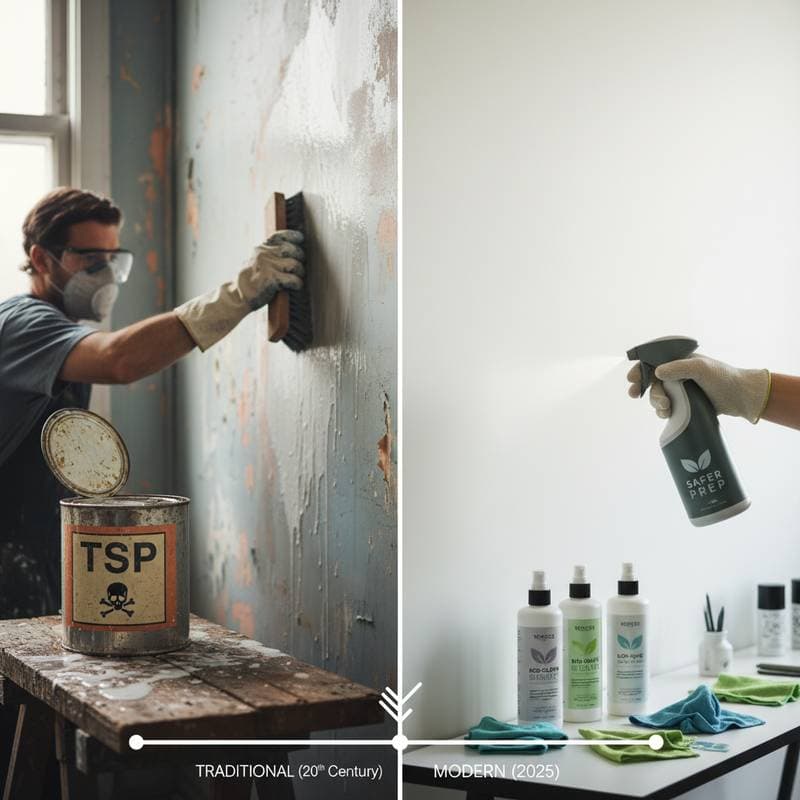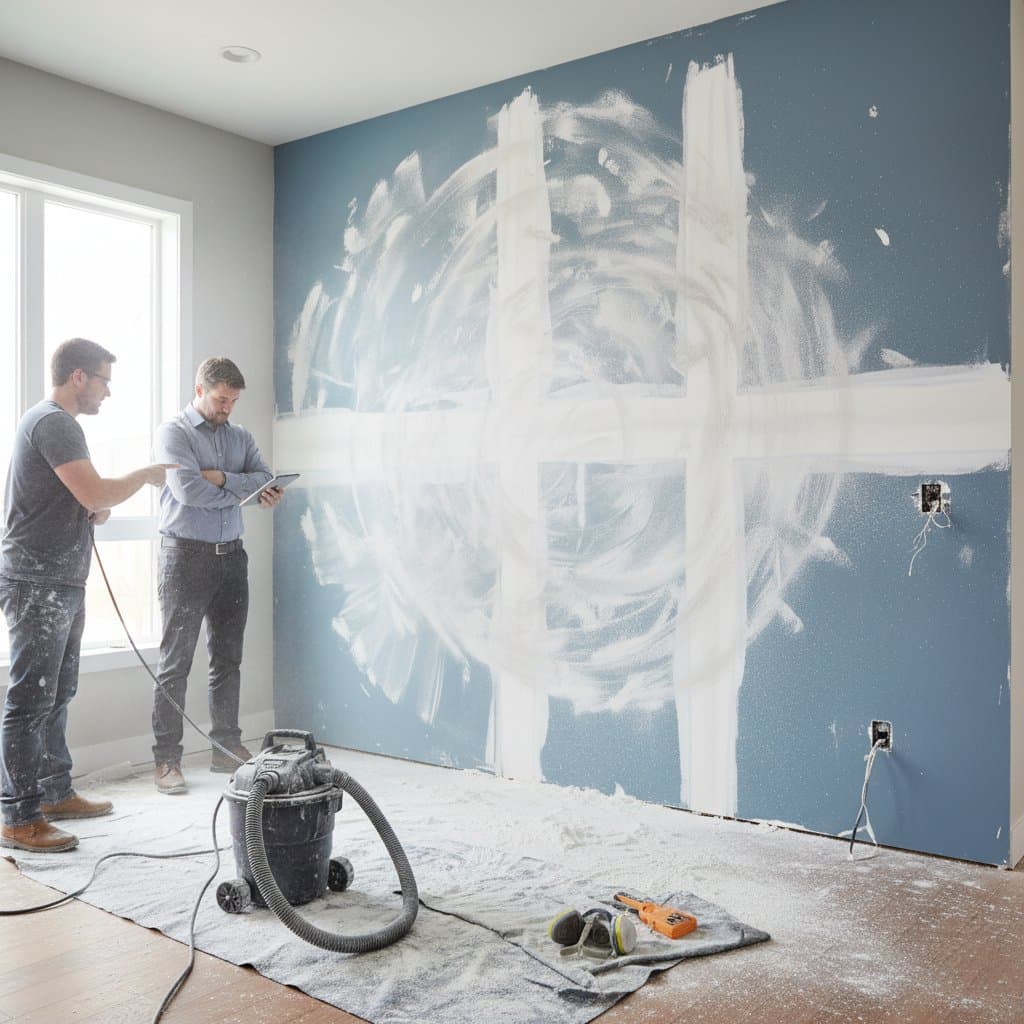The Consequences of Skipping TSP in Wall Preparation
Many individuals contemplate bypassing wall cleaning before painting, drawn by the appeal of immediate color application. This temptation proves widespread. However, such an omission warrants caution. TSP, the formidable cleaner vital for surface readiness, can silently undermine the entire project if overlooked. Observations from film sets, private residences, and premium commercial venues reveal initial success followed by swift peeling, bubbling, or fading. This section explores TSP's importance, the repercussions of its absence, and strategies for consistent professional results.
Understanding the Function of TSP
TSP denotes trisodium phosphate, far exceeding the role of a basic detergent. It functions as a surface protector, penetrating grease, oils, fingerprints, and smoke residues beyond the reach of standard soaps. These imperceptible contaminants hinder proper paint bonding. Without secure attachment, paint shifts, flakes, or applies inconsistently, leading to expended resources and a prematurely aged appearance.
TSP distinguishes itself through its dual capability to degloss existing surfaces during cleansing. This combined process creates an ideal texture for adhesion. In fast-paced television production environments, reliance on TSP ensured initial paint applications succeeded without revision. Budgets and timelines tolerated no errors, and TSP transformed glossy walls into receptive bases swiftly.
The Repercussions of Omitting TSP
Initial time savings from skipping TSP often multiply efforts subsequently. Consider these common failures when preparation falters:
- Peeling and flaking: Paint detaches readily, particularly in moisture-prone areas like kitchens or bathrooms where oils accumulate.
- Uneven coverage: Residues cause irregular absorption, resulting in blotchy finishes.
- Bubbling or blistering: Entrapped moisture expands beneath the paint layer.
- Color distortion: Underlying stains or residues seep through, especially with pale hues.
Addressing these issues demands sanding, priming, and reapplication, escalating frustration and expense. Professional services incur additional labor charges, while independent efforts double material costs. What begins as efficiency transforms into a costly reversal.
Applying TSP with Professional Precision
TSP application requires neither complexity nor high expense, available at hardware retailers for minimal investment compared to quality brushes. Phosphate-free alternatives offer environmental benefits while maintaining efficacy.
Follow this streamlined procedure for optimal results:
- Prepare the solution: Adhere to package dilution guidelines precisely. Excessive concentration risks residual interference; insufficient strength yields inadequate cleansing.
- Distribute evenly: Employ a sponge to cover the surface comprehensively, focusing on edges and moldings. Visible removal of contaminants often surprises.
- Rinse thoroughly: Utilize clean water to eliminate all traces of the cleaner, preventing adhesion disruption—a frequently overlooked essential.
- Allow full drying: Permit complete evaporation before proceeding, as residual dampness undermines paint integrity.
This methodical approach demands modest effort yet yields enduring professional quality.
Preparation Strategies Across Budgets
Effective surface readiness accommodates various financial levels, ensuring accessibility for all projects.
- Modest investment: Opt for phosphate-free TSP equivalents, warm water, and a standard sponge, ideal for compact spaces or rentals.
- Moderate investment: Incorporate microfiber cloths and a dual-bucket rinse system to streamline the process and halve duration.
- Substantial investment: Select industrial-strength formulations with spray applicators, suited for expansive or professional-scale undertakings.
Each tier promotes superior cleanliness and bonding, aligning with the core objective of reliable finishes.
Insights from Professional Set Experiences
Television design demands flawless execution under intense scrutiny, with paints drying rapidly sans imperfections. TSP proved indispensable, applied prior to every recoating, even on provisional plywood or MDF structures. The transformation yielded seamless application, vibrant tones, and absence of defects. These rigorous practices translate seamlessly to residential applications, elevating everyday results.
Securing Enduring Wall Performance
Proper preparation's true value emerges over extended periods, preserving vibrancy, sharp edges, and seamless repairs. This diligence underpins transformations from minor updates to comprehensive overhauls. TSP, though unassuming, anchors every resilient finish. Prioritize thorough cleaning to sustain aesthetic integrity long-term.



